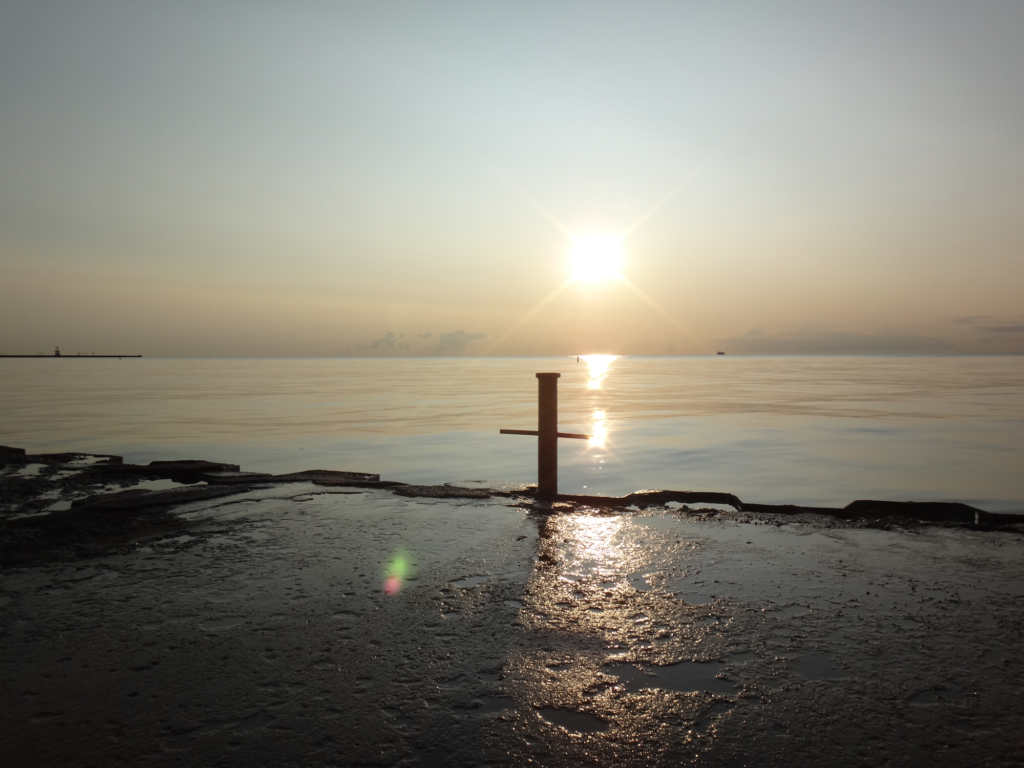One of the more iconic elements out at our swim site is small structure embedded in the concrete wall at the 1/8 mile point. The official story is that this is just the vestiges of a diving board platform that was there during the 1980s. However, the real truth is something much more incredible.
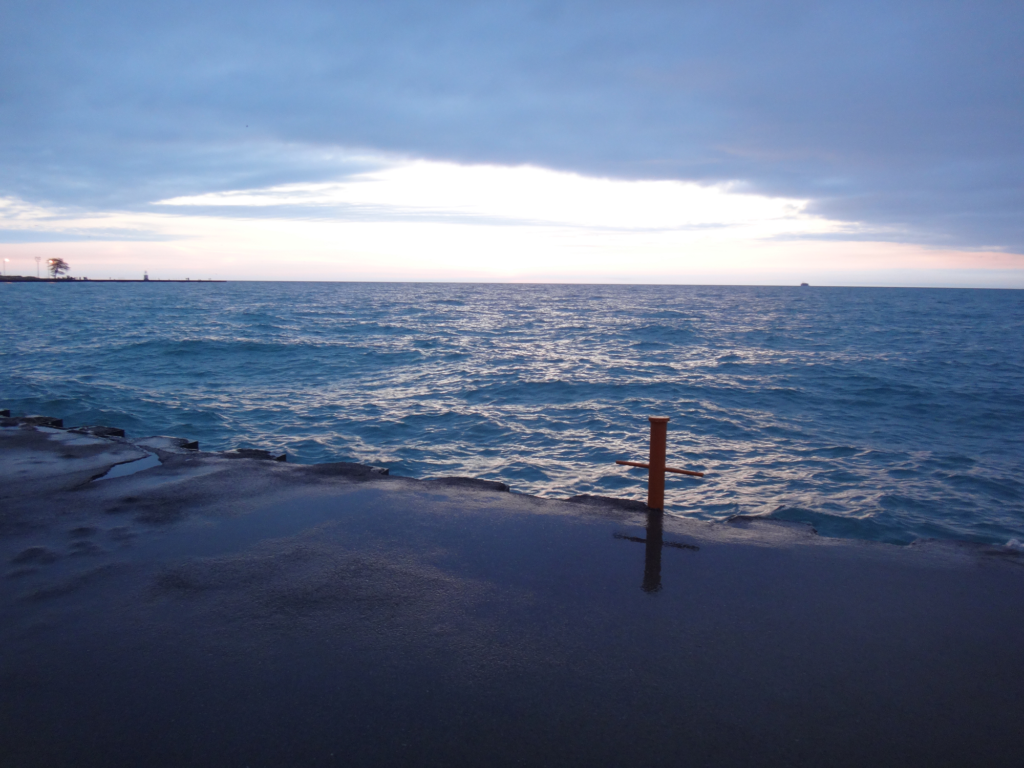
It is fairly common for veteran Lake Monsters to refer to this structure as the OWC “Swimmer’s Shrine.” That is due to it’s cross-like shape and the associated religious/spiritual connotations. But this moniker was never intended to be anything other than a light hearted innuendo. Nevertheless, recent revelations about this structure have profoundly challenged this superficiality to the point where we can no longer look at the Swimmer’s Shrine without an accompanying sense of existential awe and wonder.
To begin with, this cruciform-like structure is most certainly NOT the remains of any prior diving board platform. In fact, it has always been a stand alone artifact separate from the spring boards that were once in place along the lakefront. To illustrate this point, here are some screen captures from the 1980 movie My Bodyguard which was filmed in Chicago. As you can see from the opening sequence where the main character is biking along the lakefront, he passes by the Swimmer’s Shrine which is clearly not part of any diving platform:

To further prove this point, you can see the actual diving board platform a short while later in the opening scene:

This specific structure is identical to the diving board platform that was at 51st Street at the time and whose remnants can still be seen at that location today:
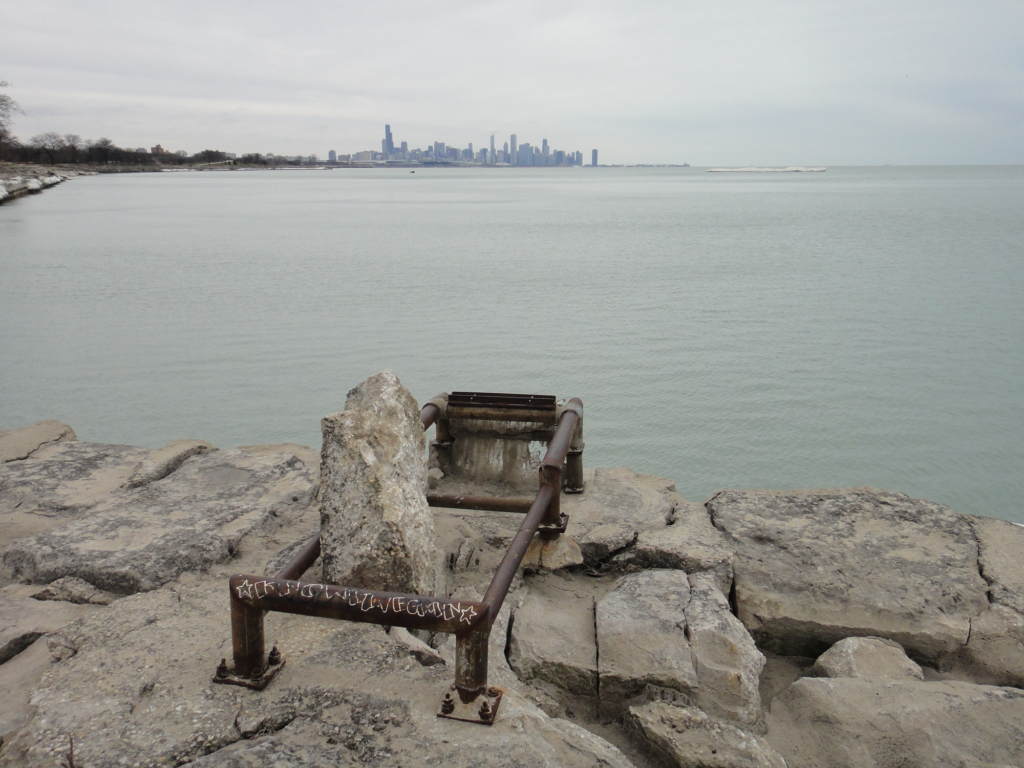
Bottom line – it’s quite obvious that the Swimmer’s Shrine has nothing to do with any diving board platform.
So why is this important?
Because it supports the increasingly popular hypothesis that the Swimmer’s Shrine is actually a secret commemorative marker to a sacred Jesuit mission that was established at that specific site in 1696.
I realize that this runs counter to the mainstream Chicago history narrative. However, as we have seen time and again, the influence of local politics and powerful interests often collude to hide the truth.
And this appears to be exactly what has happened in the case of the Mission of the Guardian Angel.
In 1696, the French Jesuit priest Father François Pinet came to what is now Chicago and established a mission to minister to the Miami Native American nation that was living in two villages along the lakefront. Formally named the Mission of the Guardian Angel, this Jesuit site was active for a few short years before infighting between seminarian missionaries from Quebec and the Jesuits caused the end of the mission:
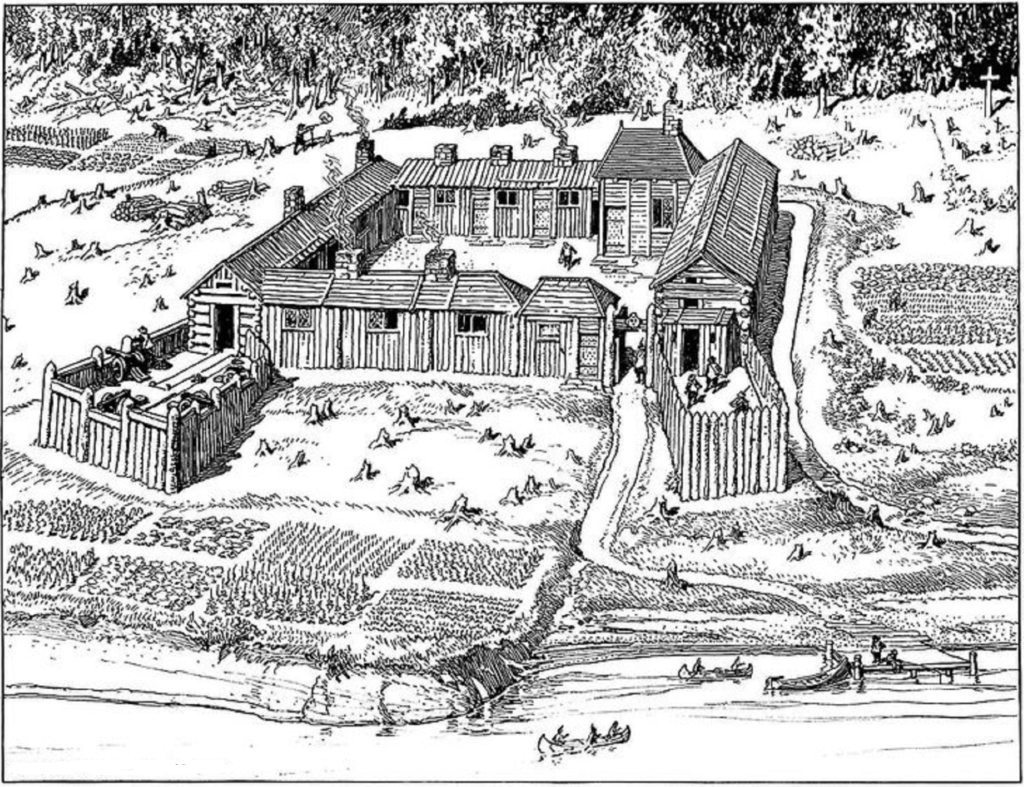
The Mission of the Guardian Angel was abandoned in 1700. A few Chicago area communities have laid claim to the actual site of the mission and have actively promoted these claims for the sake of local prestige. However, none of them has ever produced any concrete evidence demonstrating any historical accuracy.
So the exact location of the mission has remained unknown – at least until now.
In the late 1970’s, two amateur divers discovered several significantly eroded fragments of a very old building foundation in the water about 1/8 mile south of the Chess Pavilion. These are man made artifacts that you can still see while swimming if the lake is calm and the water is clear:
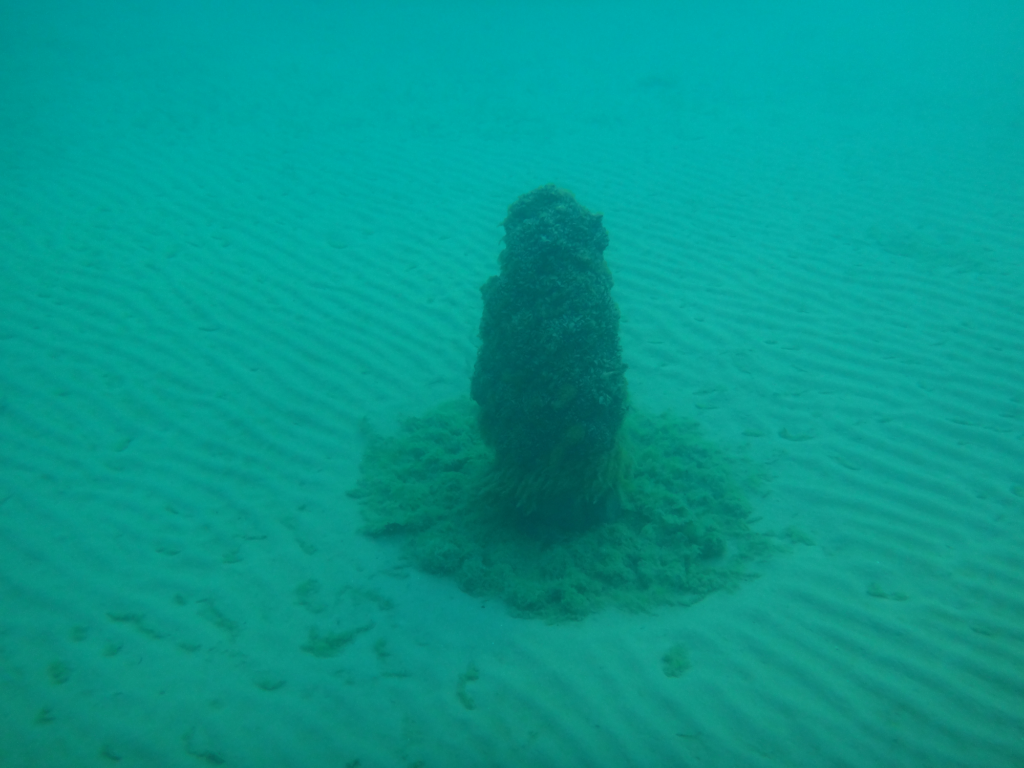
A team of underwater archeology specialists from the Field Museum conducted an analysis of the structures at the time and concluded that they were constructed approximately 300 years ago – or very close to the time the Mission of the Guardian Angel was established. And even more amazing, the scientists also uncovered an actual 17th century Jesuit cross near the building foundations – the exact type of cross that the Jesuits would give to new converts:
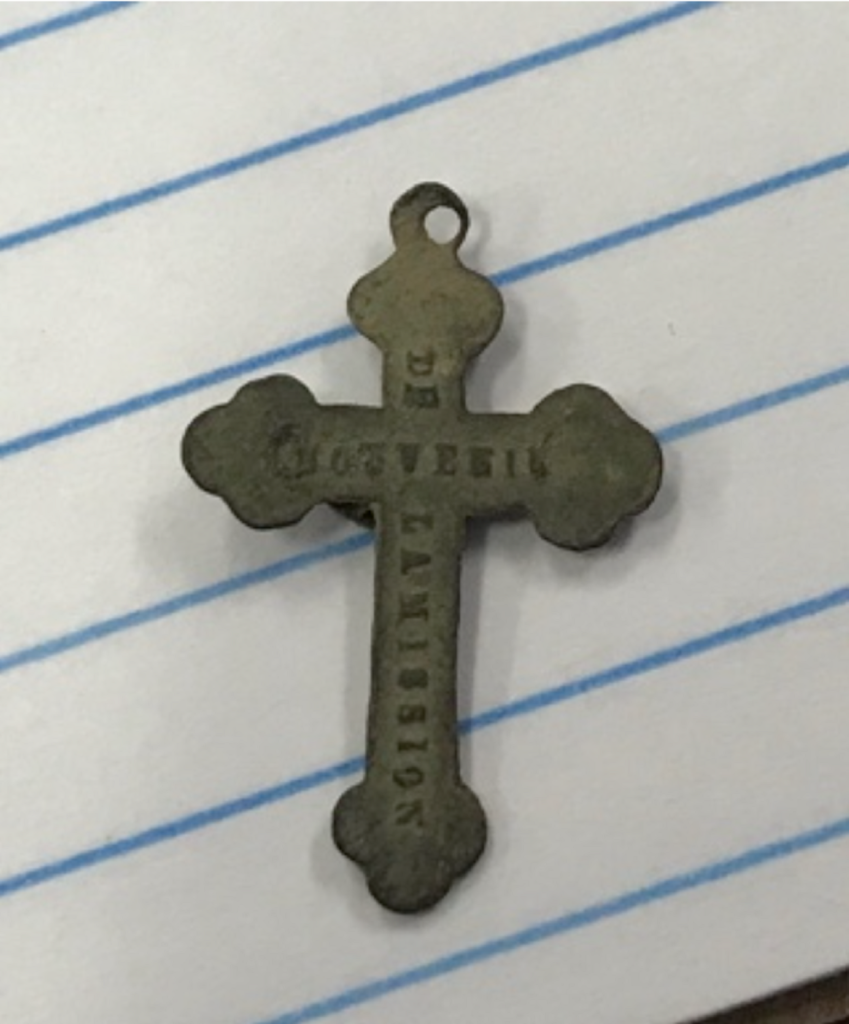
Unfortunately, nothing ever came from these discoveries. The Jesuit cross was donated to Loyola University, and the findings were never published anywhere – or even publicized. Instead, there seems to have been an active effort on part of the aforementioned communities to discredit any information that might reveal the true site of the Mission of the Guardian Angel.
So how did the Swimmer’s Shrine actually get there? That still remains somewhat of a mystery. But a few years ago I got a potential answer.
Back in 2015, Ladder 1 was in pretty bad shape, having broken apart on one side. After many calls to the park district, the city sent out a veteran repairman to weld L1 back together. I was out at the swim site that day and managed to have a chat with him. It turned out that he was one of the crew that put in the original orange swim ladders out at Oak Street Beach. So I asked him if he knew anything about the Swimmer’s Shrine, and I couldn’t believe what he told me.
Essentially, the Swimmer’s Shrine was installed at the 1/8 mile site on a special directive from the Chicago Park District. Apparently there was a sizable donation from an “anonymous academic institution.” The repairman indicated that the general speculation at the time was that this nameless institution was Loyola University – which would make sense since it is a Jesuit school. But like many things in life, it will probably always be a mystery.
So the next time you are out at our world famous swim site, take a moment to pause at the 1/8 mile mark and reflect on its potential significance. After all, you might actually be on the sacred grounds of the Mission of the Guardian Angel!
